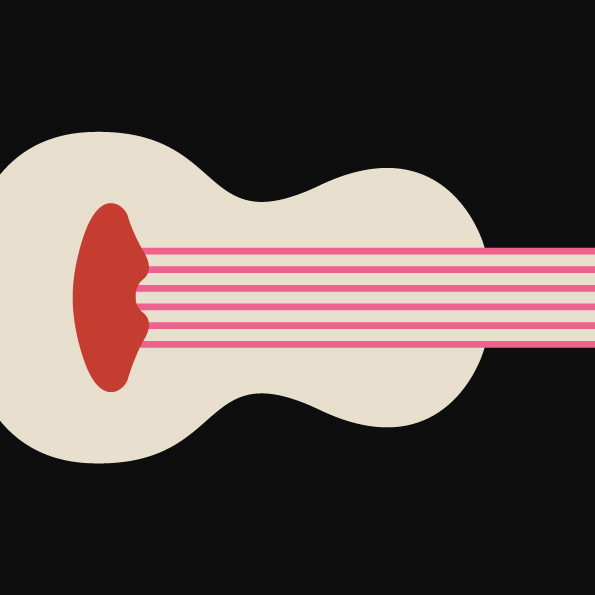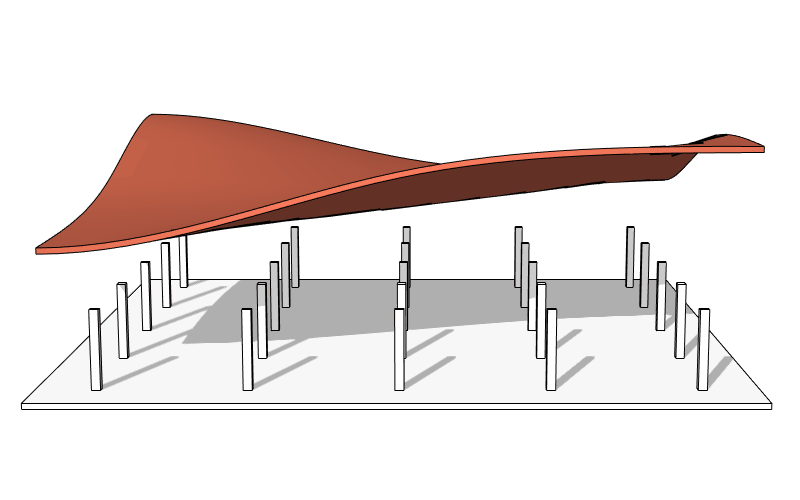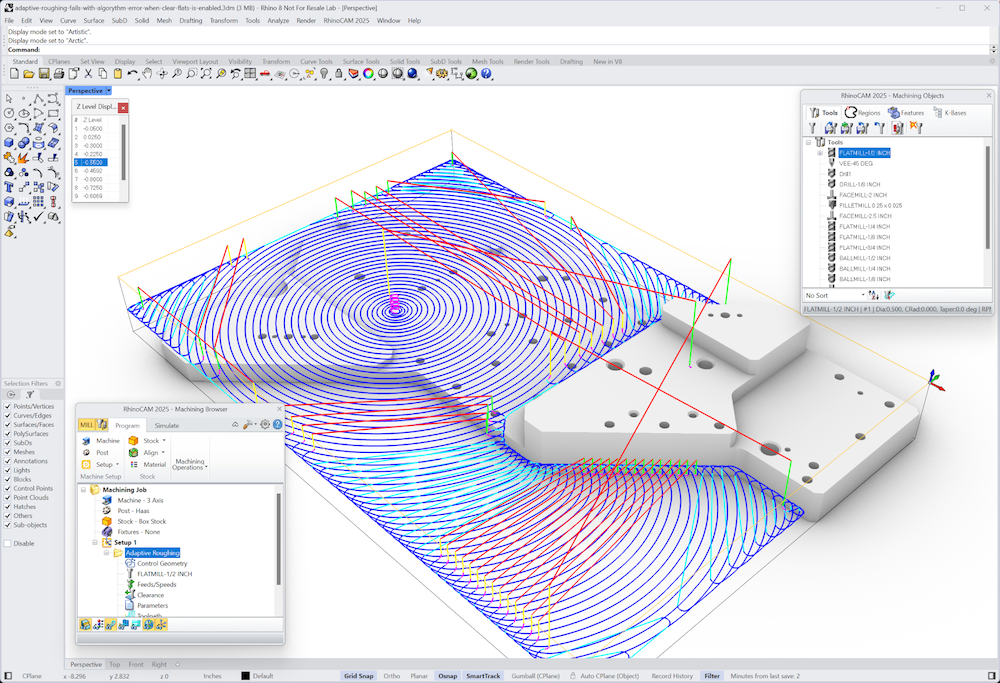Your Cart is Empty
"Great customer service. The folks at Novedge were super helpful in navigating a somewhat complicated order including software upgrades and serial numbers in various stages of inactivity. They were friendly and helpful throughout the process.."
Ruben Ruckmark
"Quick & very helpful. We have been using Novedge for years and are very happy with their quick service when we need to make a purchase and excellent support resolving any issues."
Will Woodson
"Scott is the best. He reminds me about subscriptions dates, guides me in the correct direction for updates. He always responds promptly to me. He is literally the reason I continue to work with Novedge and will do so in the future."
Edward Mchugh
"Calvin Lok is “the man”. After my purchase of Sketchup 2021, he called me and provided step-by-step instructions to ease me through difficulties I was having with the setup of my new software."
Mike Borzage
August 06, 2013 6 min read

Novedge: Tell us a bit about who you are and what you do
George Grace: I represent six digital illustrators who work across a range of disciplines, producing everything from CGI to character development, icon design and site specific work as well as typography, animation and editorial illustration- so it’s a pretty diverse offering. The one uniting factor is that they all work digitally so although my artists’ work is stylistically very different, their means of producing work is the same, which gives us a great deal of flexibility in how we deliver work and its eventual use.
I come from an art school background myself, graduating from Central St. Martins with an MA in communication design back in 2002 which was a fantastic experience as it taught me not only how to look at imagery, but how to think about it too. It’s stood me in good stead over the years, and without it I undoubtedly wouldn’t be doing this now. After graduation I started working as an Art Buyer at J Walter Thompson London advertising agency, commissioning photographers and illustrators for household global brands – HSBC, Vodafone, Pfizer and Nestle. This really opened my eyes to the industry and its processes, from shortlisting suitable artists with art directors to preparing estimates and overseeing production. It was during my time there at JWT that I met the extraordinarily talented CGI artist Alan Murray as well, so it was an invaluable experience and very good training for running my own agency.

Illustration by Alan Murray
Novedge: How do you select the artists you represent? Can artists approach you directly to be represented?
George Grace: Selecting artists to represent is one of my favourite parts of the job actually. I regularly visit galleries and read industry press of course, but find graduate shows, social media and design blogs a great source of talent. The process of stumbling across work that leaps off the screen, meeting the artist and then collaborating to put their professional portfolio together is hugely exciting. It’s about seeing merit in something, spotting the potential and running with it. I’m very mindful of the need to keep my agency relatively small- I’m not interested in representing fifty artists- I don’t think it’s in their interests or mine to be presented in that context. Instead what I hope to offer is a stylistically diverse roster of carefully curated talent.
I receive a lot of requests for representation which is fantastic as it keeps me aware of whats going on in the wider world of visual communication. Sometimes the work is totally outside what we’d call conventional commercial illustration, but it’s all part of the process, as it challenges my ideas and in turn informs my thinking about the agency and its wider practices. I’m always open to new submissions of course- they keep me sharp!

Illustration by Dan Stafford
Novedge: What are the main reasons an artist would want to be represented by an agency, rather than taking care of everything themselves?
George Grace: It’s a good question, and one I’m asked with some regularity. A big part of my work as agent is arranging and conducting portfolio presentations at advertising agencies, it’s a great opportunity to share work and build relationships with creatives. Meeting creative industry people is always a pleasure, and provides vital insight not just into the projects they’re working on, but how they feel about the imagery I’m showing. It’s a two way street in that respect, sharing my artist’s work with them at the same time as gauging their feedback. Publicising their work across social media, exhibitions, and trade publications also has its place, it’s a matter of targeting agencies and individuals who are relevant to my artists output essentially. Negotiating fees and policing the usage of an artist’s work are central to my role, as is overseeing the production process once the job is underway. So it’s really a question of trying to make the process as smooth as possible, acting as a hub between client and artist. A lot of artists understandably find it hard to price their work properly, time consuming to promote, and difficult to maintain contacts at the same time as producing the visual work itself, so that’s where I come in. Coming from an illustrative background, with advertising industry experience I’m well positioned to understand both sets of demands.

Illustration by Michael Arnold
Novedge:What is some of the work created by artists you represent?
George Grace: One of my favourite recent projects was with Jordon Cheung. He’s relatively new to the agency but has been busy pretty much since he joined. He’s been put forward for some large scale prestigious commissions stateside lately, but one that stands out was a recent editorial commission for ‘This Old House’ a publication over in the US. The brief was to illustrate a series of bizarre facts about home refurbishment in his signature iconic style. The beauty of the job was turning something that could be quite mundane into a really lovely series of illustrations which dealt with the subject matter in a compelling, consistent and light hearted way. Jordon answered the brief in his characteristically humorous manner with a lightness of touch that fitted the subject matter perfectly and the art directors were delighted with it, so he nailed the brief the first time!




Illustrations by Jordon Cheung
Another recent commission was Alan Murray‘s work for Peugeot automotive on behalf of Havas worldwide here in London. He was tasked with producing a series of executions depicting their new range of family cars, set against a dynamic ribbon device which was to feature their strap line ‘Drive Away Happy’ as a typographic treatment. It was a huge job across nine executions, each featuring differing models of car, with varying ribbon elements as it had to allow for multiple page layouts. We worked closely with the art directors to arrive at an image that was consistent with Peugeot’s brand, then went on to roll the look out across the whole campaign. Watching the idea transform from a sketch of an idea on paper to a fully worked up gorgeous CGI reflective ribbon was a delight!

Illustration by Alan Murray
Dan Stafford was recently commissioned by Bloomberg View in New York to produce a piece about Heniz’s takeover bid. The subject matter was pretty dense by its nature, and certainly not an area familiar to most people, but Dan’s ability to condense an idea into an attractive and appropriate visual metaphor really came into force. Ideas form such big part of any artists repertoire, but it’s turning these into something that appears unforced and that tells a story, often to very tight deadlines that I find so thrilling- it’s seeing an idea take shape and being part of that process, amazing!

Illustration by Dan Stafford
Novedge: What innovations do you find most exciting in the field of illustration?
George Grace:I think we’re at a really exciting time for the arts generally but particularly illustration. People’s attitudes toward illustration have changed immeasurably in recent years- I think there used to be a tendency to regard it as photography’s poor relation, whereas now its uses across the digital sphere are becoming apparent. The internet has a large part to play in this of course, allowing for instant communication and the ability to share work across continents in seconds, but the facility to animate work relatively quickly is as big a factor to me. When a drawing is animated, it immediately becomes something else- it transcends our notions of what illustration is. With the rise of tables and smartphones, this is an area that will be increasingly in commercial demand. As all of my artists work digitally, we have the capacity to produce animated campaigns that run alongside the traditional media such as out of home or press, which is the icing on the cake- and being at that cross road between commercial art and technology feels like a good place to be.

Illustration by Tim Hunt
Novedge: What advice do you have for young people who would like to work as digital illustrators? What skills, both technical and personal, are in demand in the CGI industry?
George Grace: I’m not sure there’s any kind of golden rule here, but having worked alongside Alan Murray for some time now- I’d have to hold him up as the example. I think you’re right to identify a balance between technical and personal ability. There’s no point honing your skills in Modo or Lightwave for years if you’re not able to work alongside others. A huge part of what we do in this industry is collaborative, whether conceptually or in its execution. Ideas are often thrown around at the beginning of a project- some work some don’t- but it’s through a process of sharing that we arrive at an answer, building walls around our ideas only hampers the process. Likewise producing the actual visual content requires collaborating with design teams and in some cases animation teams to whom we hand over to, so some flexibility is required. I guess the key quality in all of this is openness. Often when I meet Alan, he’ll be carrying an 6 inch thick intimidating-looking software manual under one arm because he’s constantly pushing himself by learning. It’s that openness to new ideas, evolving, challenging oneself, and being receptive to new ideas that make for world class talent.
See all the artists currently represented by George Grace on his website. And get in touch with him on Twitter and Pinterest.
I interviewed Alan Murray not too long ago, check out his interview on The Edge.
Related articles

April 30, 2025 8 min read
Read More
March 08, 2025 5 min read
Read MoreSign up to get the latest on sales, new releases and more …